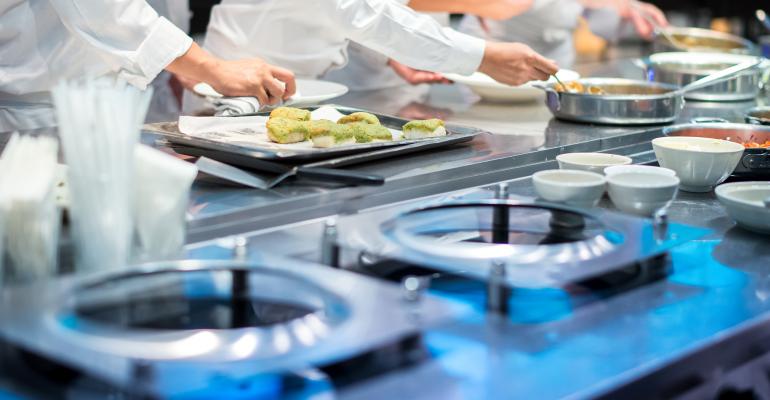In the months before the COVID-19 pandemic hit, ghost kitchens were already taking off and helping retail landlords mitigate fallout from retailer vacancies. The lockdowns have accelerated ghost kitchen openings amid consumers' much greater reliance on food delivery. The question now is whether the current dynamic will lead to a glut of these concepts down the line.
“Since restaurants have been largely forced to pivot to pick-up and delivery only, they have effectively all become ‘ghost kitchens,’” says Scott Holmes, senior vice president and national director of the retail division with brokerage firm Marcus & Millichap. “Some operators have added delivery-only locations to their expansion plans going forward. It remains to be seen whether these will be long-term growth engines.”
With the increase in demand for delivery, ghost kitchens are well positioned as a viable alternative for restauranteurs who won’t be able to resume full-scale in-house service for some time, notes James Cook, director of retail research at real estate services firm JLL. In the past two months, many small restaurant groups jumped at the opportunity to continue serving customers by pairing with a ghost kitchen group to provide delivery services, notes Anjee Solanki, national director of retail services with real estate services firm Colliers International. Others are evaluating a hybrid restaurant and ghost kitchen.
As a restaurant operator, renting a portion of a fully built-out kitchen to generate sales is cost advantageous. Restaurant operators concerned about capital and labor constraints, as well as new start-ups wishing to mitigate the risks of opening a new business, may also switch to the ghost kitchen vehicle, according to Stephen Taylor, vice president in the restaurant practice group of real estate services firm CBRE.
“Ghost kitchens have a lower cost of entry into the market, remove many operating and occupancy costs, [such as] rent and overhead, and offer a streamlined solution to scaling up and optimizing delivery,” says Taylor. “Other benefits include speed to market, maximization and efficiency of inventory, [so] it allows an operator to free up resources to implement digital branding and marketing campaigns.”
Ghost kitchens can charge operators on a monthly, weekly, daily or hourly schedule for providing equipment and food supplies, dishwashing, laundry and cleaning services, and integrated technology. The restaurant operator will just need to create the menu, take out a general liability insurance policy and schedule a health inspection for their virtual brand.
Investment activity in the space has escalated in recent years, reaching around $1.9 billion in 2019, more than twice the volume recorded the year prior according to PitchBook.
And Solanki says there was an increase in deals occurring in April 2020. “Our retail professionals are having many conversations with restaurant groups about deploying ghost kitchens in second generation restaurant space that may not reopen.”
Consumer habits have been changing and those trends have only been accelerated by COVID-19, notes Taylor. “This is not just a short-term trend, but the environment and landscape we will be living for generations.”
Others, however, caution against an eventual glut of ghost kitchens as more and more restaurants incorporate this model, especially amid coronavirus lockdowns. For example, James Cook, head of retail research at JLL, says demand for delivery and pickup is at an all-time high right now, but he does not expect that demand to remain at those levels in the future. Phil Colicchio, executive managing director of Colicchio Consulting, the specialty food and beverage, hospitality and entertainment group at Cushman & Wakefield, says, “There’s almost already a glut of these things and I think that there’s going to be a bigger glut.”
Ghost kitchens are facing greater competition than ever right now, as both restaurants and food halls have pivoted to a ghost kitchen model, says Trip Schneck, executive director at Cushman & Wakefield. “The other issue I have is that I think ghost kitchens are great for nationally established and recognized quick-serve and fast casual brands,” Schneck notes. “But for the independent, it’s like being in a 2,000-vendor virtual food hall. You lose the marketing benefit of having a bricks-and-mortar storefront, so it’s tough to differentiate, it’s tough to get your brand out there.”




